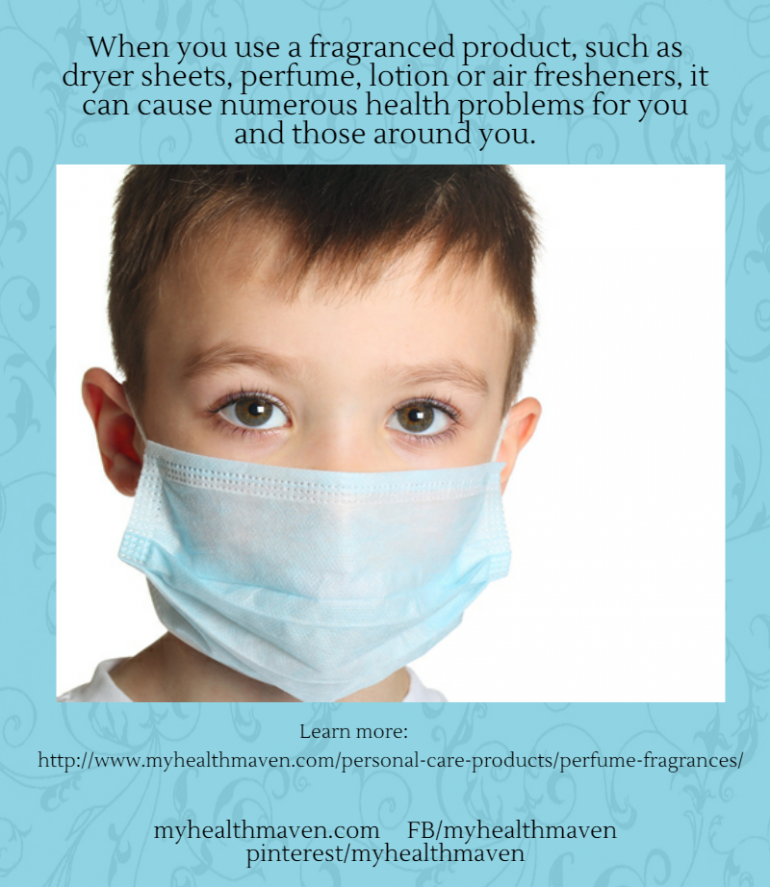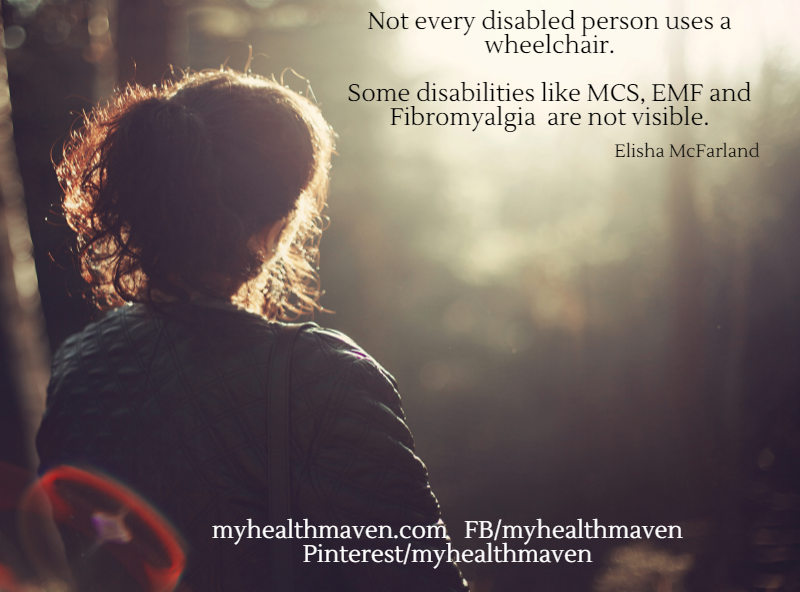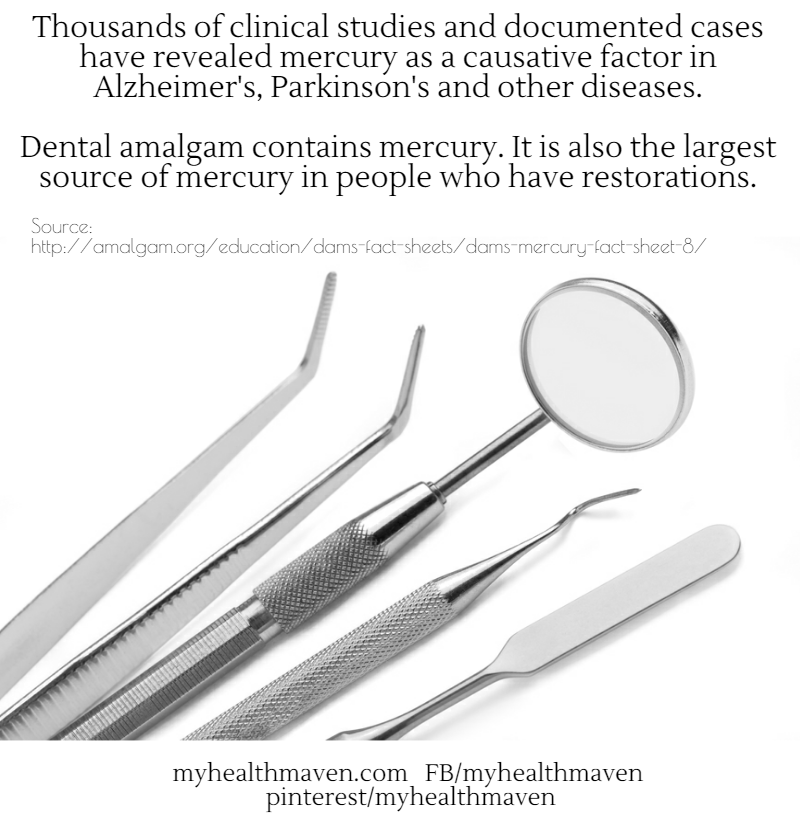Do you get a headache when someone wearing cologne or perfume walks by you? Does the overwhelming smell of perfumed dryer sheets make you feel nauseous or cause you to feel a little shaky? If it does you’re not alone. One in four people in the U.S. have reported a sensitivity to chemicals. According to Dr. Anne Steinemann, chemical sensitivity has increased in the past decade more than 200 percent and individuals diagnosed with MCS climbed 300 percent — totaling an estimated 55 million adults in the U. S. alone with chemical sensitivity or MCS. (1)
What is Multiple Chemical Sensitivity?
MCS is the acronym for Multiple Chemical Sensitivity. (2) Multiple Chemical Sensitivity refers to individuals who have negative reactions when exposed to chemicals, toxins, food and/or water. The exposure can be through inhalation, ingestion or topical application such as lotion or shampoo. MCS is known by many other names such as Environmental Illness, Environmental Intolerance, Chemical Injury, Toxic Injury and Bioecologic Illness. Whatever name an individual uses to describe their health, it simply means that when exposed to a toxin it can trigger a reaction that takes hours or days to recover and in some cases lands you in the Emergency Room.
Symptoms of Multiple Chemical Sensitivity
For many individuals living in a modern world with its many conveniences is a joy. For those with MCS it can be a nightmare. While some may find air fresheners and fabric softeners pleasant, those with MCS live in dread of coming in contact with the toxic chemicals used in the manufacturing of those products, due to the reactions these chemicals will cause. With repeated exposures to these toxins, the body becomes weaker, and the individual’s health will decline.
Common Symptoms
It’s important to note that symptoms vary from individual to individual due to their level of toxicity, their ability to break down toxins and their overall health.
| Headaches | Rashes | Difficulty Concentrating |
| Difficulty Breathing /Asthma | Muscle Aches or Pain | Joint Aches or Pain |
| Fatigue | Memory Loss | Confusion |
| Burning Sensation on Skin | Tingling Skin | Anaphylaxis |
| Anxiety | Dizziness | Extreme Lethargy |
| Heart Palpitations | Sleeping Difficulty | Tingling/Numbness/Burning around mouth |
What are Common Triggers?
People with MCS have an acute sensitivity to a vast range of everyday items, ranging from dry cleaned clothes, perfume, detergents, carpets, cleaning products, smoke, paper, and new furniture to name a few. The common chemical ingredients of in many of these products are VOCs and phenols. Typically an individual will have a sensitivity to one or two things such as perfume or car exhaust, but over time they can become sensitized to more chemicals and have more frequent negative reactions. In addition as their toxicity levels increase, the number of items they react to increases as well.
What is interesting to note is that MCS is somewhat individualized, meaning what bothers one person with MCS, may not be an issue for another. There can be numerous reasons for this including one individual having a higher level of toxicity than another or having genetic deficiencies, such as the inability to produce glutathione (which helps the body to break down toxins). The wide range of symptoms and reactions is why it is challenging for the medical community to grasp the concept of MCS. You can have a dozen people in a room, who are all exposed to the same thing, and each will have a different reaction.
One aspect of MCS that is understood by conventional medicine is sensitization. Sensitization is a true allergic reaction to a chemical or pollutant within the body of mast cells and IgE antibodies. Once sensitized to a particular irritant, another exposure to even a tiny amount of the irritant (even parts per million-ppm-or parts per billion-ppb can cause an extreme allergic reaction. (Note: one ppm=0.0001 percent.) These low levels of irritants go virtually undetected to the average person, but it’s enough for someone with MCS to have a reaction.
Some common triggers can include (3):
| Dryer Sheets | Fabric Softeners | Scented Detergents |
| Fragranced Products | Car Exhaust | Mold Exposure |
| Pesticides | Herbicides | Lawn Fertilizers |
| Gasoline | Household Cleaning Products | Cigarette Smoke |
| Personal Care Products | Particle Board | New Carpet |
| Natural Gas | Soft Plastics | Paints/Varnish |
| Newspapers/Magazines | Dry Cleaned Clothes | Glues/Adhesives |
| Food Additives | Food Preservatives | Medications |
How is MCS Treated?
There are many options for treatment of MCS. The treatment or protocol will depend on the individual, their level of toxicity, the origin of the illness, and their personal level of tolerance to the protocol that is recommended.
Information is a powerful tool. Knowing what you’re dealing with is a great first step in recovery. Having lab tests done can provide both you and your practitioner with vital information. Factors such as heavy metal poisoning, or genetic deficiency will determine the type of detoxification protocol that is appropriate for you. Lab work can also point out any vitamin or mineral deficiencies which may also be negatively impacting your health.
The best tip I can offer is to keep a daily journal. Note what you eat, where you go, any chemical exposures and any unusual reactions you have. This will offer great insight on potential triggers or problems.
For example:
-After grocery shopping you feel sluggish or have difficulty concentrating. (Likely cause- A trip down the cleaning product aisle).
-You have a headaches, when you use public bathrooms that have air fresheners. (Likely cause-VOCs, fragrance)
-Your skin burns or itches after being outside. (Likely cause- dryer sheets, scented detergents from dryer, insecticides, pesticides or fertilizers).
-The new carpet in your home or office, makes your skin tingle, burn or causes your eyes to water. (Likely cause- formaldehyde VOCs outgassing)
12 Steps to Minimize Your Daily Exposures
If you are living with a chemical sensitivity or MCS it is easy to feel overwhelmed, but there are many proactive steps you can take to improve your living environment and your health. Some basic steps include:
- Clean Up at Home-Remove all scented products and all conventional cleaning products, they generally contains fragrances and chemicals that are harmful to the respiratory system and your overall health. Most cleaning products can be replaced with baking soda, water and vinegar. Check this link for nontoxic cleaning recipes. (4)
- No Air Fresheners or Dryer Sheets-These are full of cancer causing chemicals and should never be used. Check this link for making your own air fresheners. (5)
- Drink pure filtered water. Many options are available such as whole house water filters, reverse osmosis, counter top models and carbon filter pitchers. A healthy amount of water would be half your weight in ounces. So if you weigh 150 pounds, your body needs 75 ounces of water daily.
- Purchase an air cleaner for your home. Many companies produce portable air filters that can be rolled from room to room, as well as whole house air filters.
- 5. Eat organic food as often as possible. If you can grow your own foods you will receive the benefit of truly fresh food, without pesticides or herbicides as well as enjoying all the health benefits of working outside in the fresh air, and sunshine. If you can’t have a garden, purchase produce locally from the farmer’s market or organic market.
- Use safe laundry products. There are many chemical free and fragrance free options available such as Soap Nuts, or T-wave capsules which are reusable and require no detergent to get your clothes clean. The purchase also includes a bottle of liquid enzymes to help remove stubborn stains. For laundry hints click here. (6)
- Use organic body care products. Don’t trust a product without reading the label. If you can’t pronounce the ingredients on the label, you probably shouldn’t be using it. There are many websites to look up ingredients such as www.cosmeticsdatabase.org or books such as “A Consumer’s Dictionary of Cosmetic Ingredients”.
- Shower and change your clothes after going out. Upon arriving home, wash your clothes, shower and change. This will prevent the chemicals that are on your clothes and body from out gassing into your home, as well as being continually absorbed through your skin during the day.
- Wear organic clothes. Cotton is one of the most heavily sprayed crops. If you wear cotton, make sure it’s organic. Look for other natural fiber clothes made from bamboo or hemp. Learn more about toxins in clothes. (7)
- Wear a mask. Whenever you go out wear a mask to protect yourself from inhaling chemicals from products other people may use, as well as products in the store, and general outdoor pollutants. It will not eliminate everything, but will greatly reduce your exposure risk.
- Follow a detox protocol. Find a health care practitioner familiar with MCS to oversee your protocol. The biggest mistake people make is in detoxing too fast. If you detox too fast, your symptoms can worsen and you can become ill as your body dumps chemicals faster than your liver can process them. Detox baths and infrared saunas are a wonderful option, under your practitioner’s supervision.
- Eat more fiber. Consider adding a fiber drink or supplement to your daily routine. Most of us are not consuming the 35 grams of fiber daily that is recommended. Fiber helps to keep things moving along. The longer your exit time for food, the greater the risk of food putrefaction in your intestines, as the undigested backed up waste is absorbed into the bloodstream which causes auto-intoxication.
In Conclusion
The incidence of chemical sensitivity and MCS is growing, it is easy to correlate it to the increased number of chemicals used in our daily lives. It is also an illness that requires time, patience and persistence to recover from.
Genetic testing and lab work may give insight into the root cause of your symptoms / illness and will help you and your practitioner determine a protocol that works for you.
Keeping a daily journal of your diet, routine, exposures and reactions will provide vital insight to you and your practitioner.
Educate yourself about the products you are using and look for healthier, non-toxic options whenever possible.
Eliminate your exposure to toxins by switching to safe cleaning and personal care products. Avoid the use of toxic chemicals in your yard and home.
Learn more about MCS
References:
- One in four Americans suffer when exposed to common chemicals. (2018, March 14). Retrieved from https://www.sciencedaily.com/releases/2018/03/180314092312.htm
- What is Multiple Chemical Sensitivity? (n.d.). Retrieved from https://www.hopkinsmedicine.org/healthlibrary/conditions/environmental_medicine/multiple_chemical_sensitivity_85,P00480
- Multiple Chemical Sensitivity (MCS) -. (n.d.). Retrieved from https://www.arizonaadvancedmedicine.com/Articles/2013/June/Multiple-Chemical-Sensitivity-MCS-.aspx
- McFarland, E., N.D. (2018, March 01). 10 Simple Ways to Reduce the Toxins in Your Home. Retrieved from http://myhealthmaven.com/10-simple-ways-reduce-toxins-home/
- McFarland, E., N.D. (2017, August 13). Make Your Own Non Toxic Air Freshener with Essential Oils. Retrieved from http://myhealthmaven.com/make-non-toxic-air-freshener-essential-oils/
- McFarland, E., N.D. (2016, December 20). Laundry Soap Options. Retrieved from http://myhealthmaven.com/laundry-soap-options/
- McFarland, E., N.D. (2016, December 07). Are Your Clothes Making You Sick? Retrieved from http://myhealthmaven.com/clothes-making-sick/
This article was originally posted at The Hearty Soul








